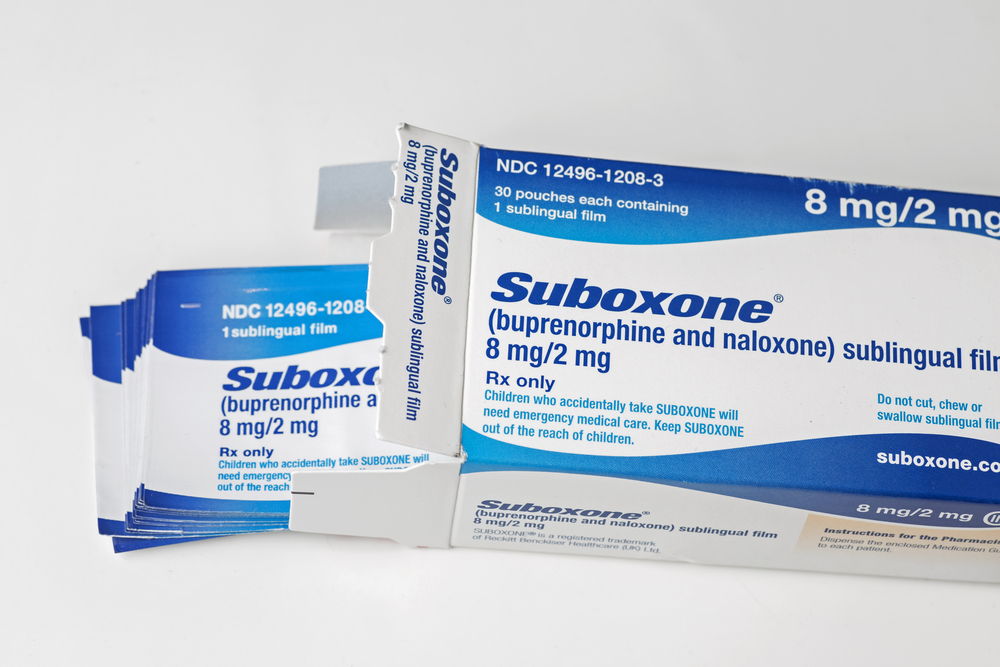The opioid crisis stretches back to the 1990s. It was triggered in large part by OxyContin, manufactured by Purdue Pharma and approved by the U.S. Food and Drug Administration (FDA). It is continuing well into its third decade, with heroin and fentanyl fanning the flames. While more than 2.4 million Americans are struggling with opioid use disorder (OUD), finding treatments with successful outcomes for OUD has been challenging. Adding to the struggle, one prescription drug treatment known for its high rate of success is facing criticism, as well as lawsuits filed by plaintiffs across the country.
The medication under fire is Suboxone, a brand-name oral medication manufactured by Indivior. The Suboxone lawsuits allege that Indivior failed to properly warn patients that it can cause severe dental issues, even after the FDA issued a warning.
Suboxone, approved by the FDA in 2002, is a combination medicine widely applauded because of its distribution. Patients can receive a Suboxone prescription in a doctor’s office and at a clinic under supervision.
Its main ingredients include buprenorphine and naloxone, which are taken in film form. The patient places it either under their tongue or between their gum and cheek for it to dissolve.
In January 2022, after the FDA received a concerning number of reports from patients who had developed dental problems after using Suboxone, the agency issued a warning that the medicine was found to be acidic. Patients were instructed to take extra steps with oral care, including rinsing their teeth and gums.
“After the medicine is completely dissolved, take a large sip of water, swish it gently around your teeth and gums, and swallow. You should wait at least 1 hour before brushing your teeth to avoid damage to your teeth and give your mouth a chance to return to its natural state,” the warning states.
How Suboxone Works
Battling withdrawals: Suboxone should be taken under the care of a medical professional as well as in conjunction with counseling. While withdrawals from opioids are not usually life-threatening, people suffering from OUD find it extremely difficult to break from the physiological dependence.
Typical withdrawal symptoms from opioids can range from tremors, gastrointestinal distress, cramping, and body aches to feeling anxious, sweating, having difficulty breathing, and experiencing dysphoria.
The treatment works by binding the same receptors in the brain as other opiates like heroin and methadone. The combined ingredients, buprenorphine and naloxone, in Suboxone can curb a person’s desire to use dangerous opioids while keeping extreme withdrawals at bay.
The ingredients: While naloxone (commonly recognized as Narcan, the widely used antidote to reverse an opioid overdose) is known as an opioid antagonist or “opioid blocker,” the treatment’s main ingredient, buprenorphine, is a “partial opioid agonist.” This means that while the effect of buprenorphine is not as strong as a “full opioid agonist,” like heroin or methadone, it still affects the same part of the brain in the same way.
The success of Suboxone lies in both naloxone’s presence (in case of misuse) and buprenorphine, itself an opioid, although one with a long half-life to aid in easing withdrawal slowly.
Suboxone Lawsuits
In the last several months, many who have used Suboxone and experienced dental issues have filed Suboxone lawsuits against Indivior Inc. and Indivior’s former parent company, Reckitt Benckiser. The lawsuits allege the manufacturer failed to warn them that Suboxone film can cause serious dental problems, including tooth loss, erosion, cavities, and cracking. The lawsuits claim that Indivior only added warning labels after the FDA required it.
The plaintiffs seek compensation for dental bills, lost wages, loss of enjoyment of life, and more. Defendants include entities who developed, designed, tested, manufactured, and distributed the medication.
There is a strong possibility several lawsuits may be moved to multidistrict litigation (MDL) soon. On January 25, the United States Judicial Panel on Multidistrict Litigation heard oral arguments on consolidating Suboxone lawsuits.
According to the Notice of Hearing Session, the lawsuits were filed from five different districts. It is expected the panel’s decision on whether to transfer the claims to one court, along with the name of the judge who will preside over the proceedings, will be made public within the next few weeks.
Suboxone users who believe they have suffered dental problems due to the medication should speak to a lawyer experienced in product liability cases about possible legal options.
Breaking free of opioids can seem an insurmountable task to those with OUD, and Suboxone is considered a primary treatment for those addicted to serious drugs. However, as with all medications, it must be used cautiously. Patients using Suboxone should monitor their reactions and pay attention to any side effects. Along with damage to teeth and gums, there are other side effects associated with Suboxone, including vomiting, sweating, constipation, tongue pain, irregular heartbeat, blurred vision, fainting, dizziness, and sleeplessness. Suboxone can also cause severe withdrawal symptoms if the patient is not already in early withdrawal from the other drugs before beginning the Suboxone treatment.




